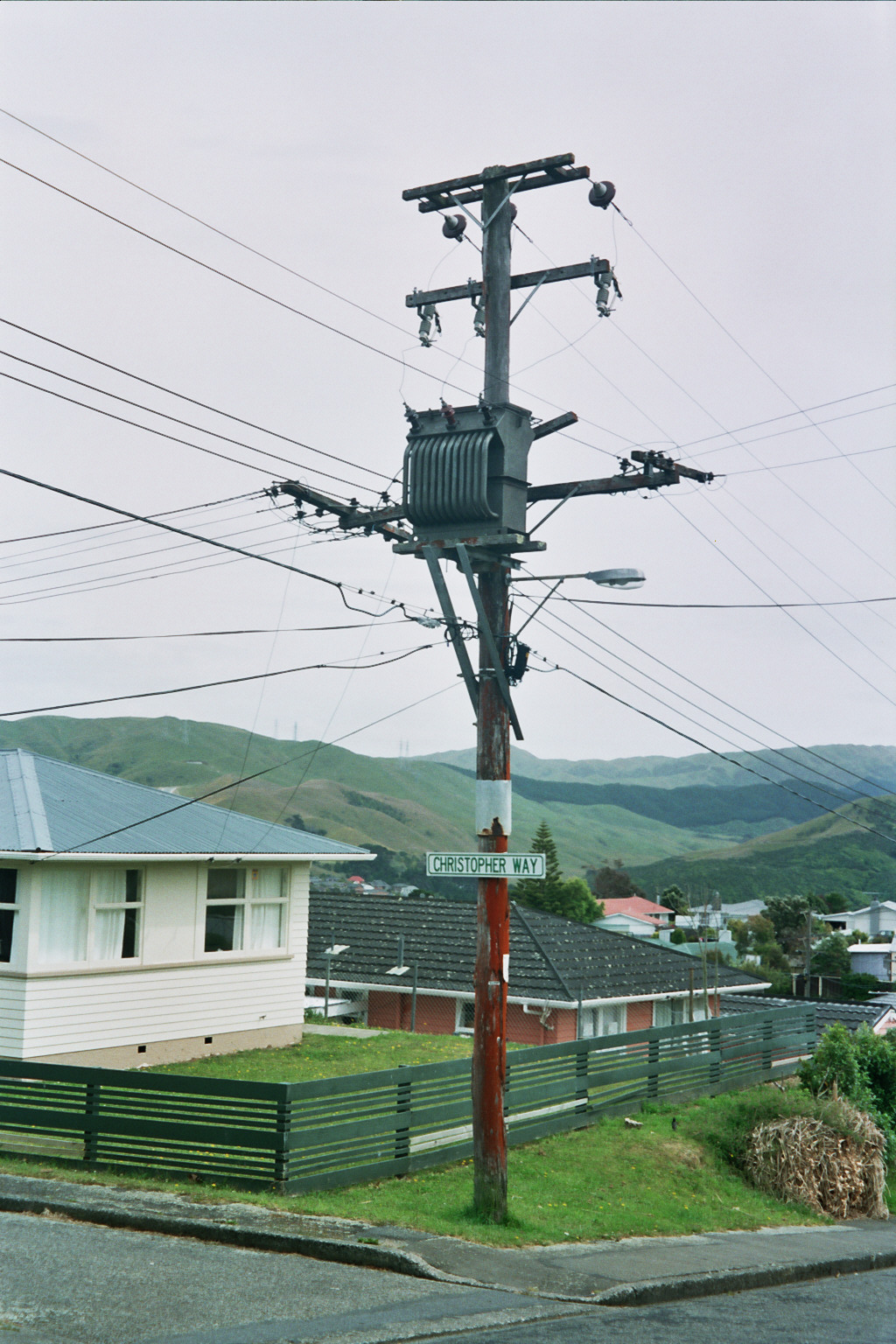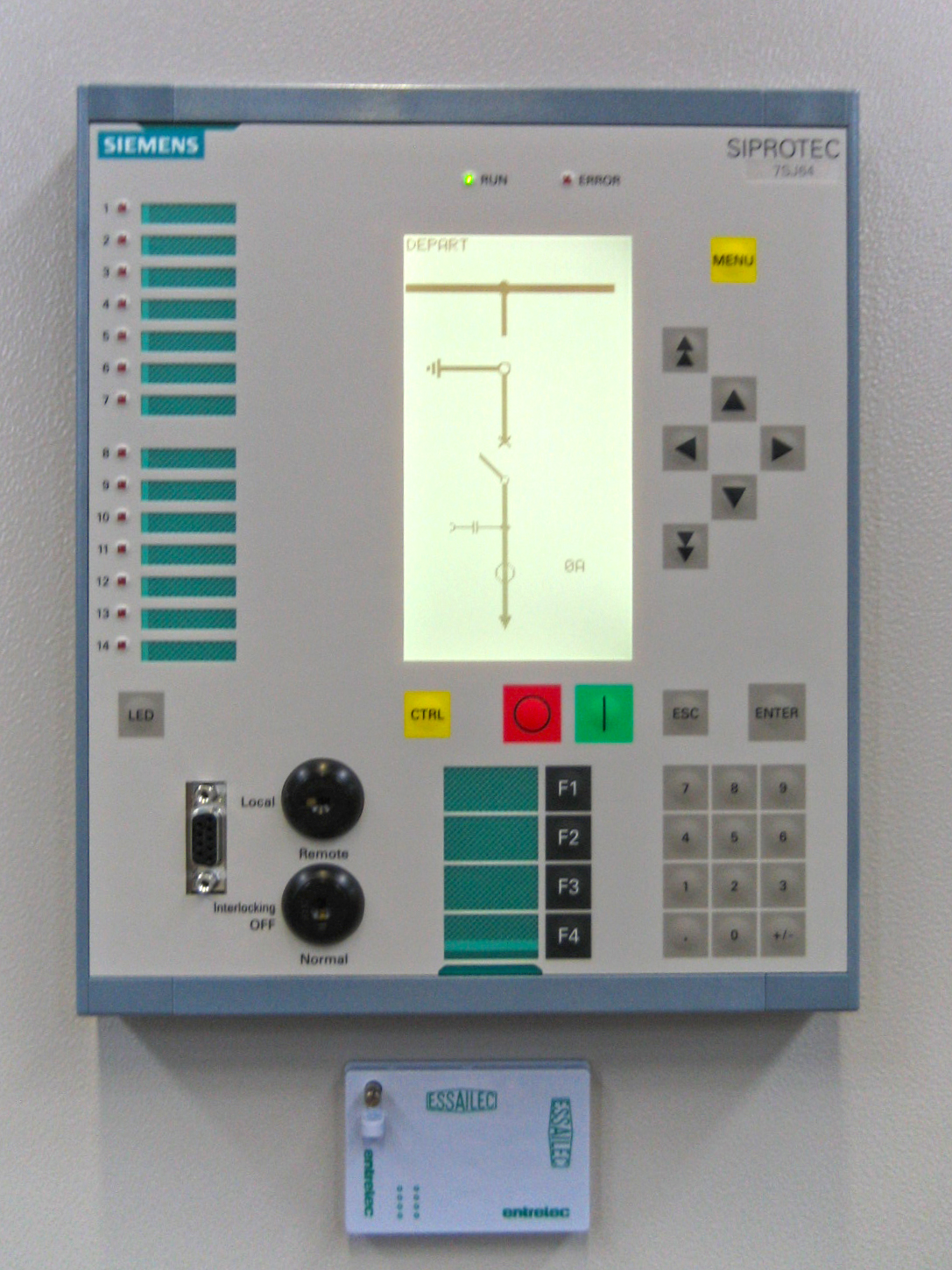|
Secondary Network
A low-voltage network or secondary network is a part of electric power distribution which carries electric energy from distribution transformers to electricity meters of end customers. Secondary networks are operated at a low voltage level, which is typically equal to the mains voltage of electric appliances. Most modern secondary networks are operated at AC rated voltage of 100–127 or 220–240 volts, at the frequency of 50 or 60 hertz (see mains electricity by country). Operating voltage, required number of phases (three-phase or single-phase) and required reliability dictate topology and configuration of the network. The simplest form are radial service drop lines from the transformer to the customer premises. Low-voltage radial feeders supply multiple customers. For increased reliability, so-called ''spot networks'' and ''grid networks'' provide supply of customers from multiple distribution transformers and supply paths. Electric wiring can be realized by overhead ... [...More Info...] [...Related Items...] OR: [Wikipedia] [Google] [Baidu] |
Circuit Breaker
A circuit breaker is an electrical safety device designed to protect an electrical circuit from damage caused by an overcurrent or short circuit. Its basic function is to interrupt current flow to protect equipment and to prevent the risk of fire. Unlike a fuse, which operates once and then must be replaced, a circuit breaker can be reset (either manually or automatically) to resume normal operation. Circuit breakers are made in varying sizes, from small devices that protect low-current circuits or individual household appliances, to large switchgear designed to protect high voltage circuits feeding an entire city. The generic function of a circuit breaker, or fuse, as an automatic means of removing power from a faulty system, is often abbreviated as OCPD (Over Current Protection Device). Origins An early form of circuit breaker was described by Thomas Edison in an 1879 patent application, although his commercial power distribution system used fuses. Its purpose was to pro ... [...More Info...] [...Related Items...] OR: [Wikipedia] [Google] [Baidu] |
Fuse (electrical)
In electronics and electrical engineering, a fuse is an electrical safety device that operates to provide overcurrent protection of an electrical circuit. Its essential component is a metal wire or strip that melts when too much current flows through it, thereby stopping or interrupting the current. It is a sacrificial device; once a fuse has operated it is an open circuit, and must be replaced or rewired, depending on its type. Fuses have been used as essential safety devices from the early days of electrical engineering. Today there are thousands of different fuse designs which have specific current and voltage ratings, breaking capacity, and response times, depending on the application. The time and current operating characteristics of fuses are chosen to provide adequate protection without needless interruption. Wiring regulations usually define a maximum fuse current rating for particular circuits. Short circuits, overloading, mismatched loads, or device failure are the prime ... [...More Info...] [...Related Items...] OR: [Wikipedia] [Google] [Baidu] |
Power-system Protection
Power system protection is a branch of electrical power engineering that deals with the protection of electrical power systems from faults through the disconnection of faulted parts from the rest of the electrical network. The objective of a protection scheme is to keep the power system stable by isolating only the components that are under fault, whilst leaving as much of the network as possible in operation. The devices that are used to protect the power systems from faults are called protection devices. Components Protection systems usually comprise five components *Current and voltage transformers to step down the high voltages and currents of the electrical power system to convenient levels for the relays to deal with *Protective relays to sense the fault and initiate a trip, or disconnection, order *Circuit breakers or RCDs to open/close the system based on relay and autorecloser commands * Batteries to provide power in case of power disconnection in the system *Communic ... [...More Info...] [...Related Items...] OR: [Wikipedia] [Google] [Baidu] |
Radial Networks
Radial is a geometric term of location which may refer to: Mathematics and Direction * Vector (geometric), a line * Radius, adjective form of * Radial distance, a directional coordinate in a polar coordinate system * Radial set * A bearing from a waypoint, such as a VHF omnidirectional range Biology * Radial artery, the main artery of the lateral aspect of the forearm * Radial nerve, supplies the posterior portion of the upper limb * Radial symmetry, one of the types of distribution of body parts or shapes in biology * Radius (bone), a bone of the forearm Technology * Radial (radio), lines which radiate from a radio antenna * Radial axle, on a locomotive or carriage * Radial compressor * Radial delayed blowback * Radial engine * Radial tire * Radial, Inc., e-commerce business See also * Axial (other) * Radiate (other) Radiate may refer to: Biology * Radiata, a taxon of jellyfish and allies * Radiate carpal ligament, a group of fibrous bands in the hand * R ... [...More Info...] [...Related Items...] OR: [Wikipedia] [Google] [Baidu] |
Insulating Mat
Insulation may refer to: Thermal * Thermal insulation, use of materials to reduce rates of heat transfer ** List of insulation materials ** Building insulation, thermal insulation added to buildings for comfort and energy efficiency *** Insulated siding, home siding that includes rigid foam insulation *** Insulated glazing, a thermally insulating window construction ** Insulated pipe, widely used for district heating and hot water supply in Europe ** Insulated shipping container, a type of packaging used to ship temperature-sensitive products Electrical * Insulator (electricity), the use of material to resist the electric current and magnetism ** Insulating link, a device used on the hook of a crane ** Insulation system, for wires used in generators, electric motors, transformers * Myelination, electrical insulation of nerve cells Other uses * Soundproofing, also known as acoustic insulation, any means of reducing the intensity of sound * Insulated neighborhood, chromosomal loop s ... [...More Info...] [...Related Items...] OR: [Wikipedia] [Google] [Baidu] |
Residual Current Device
A residual-current device (RCD), residual-current circuit breaker (RCCB) or ground fault circuit interrupter (GFCI) is an electrical safety device that quickly breaks an electrical circuit with leakage current to ground. It is to protect equipment and to reduce the risk of serious harm from an ongoing electric shock. Injury may still occur in some cases, for example if a human receives a brief shock before the electrical circuit is isolated, falls after receiving a shock, or if the person touches both conductors at the same time. If the RCD device has additional overcurrent protection integrated in the same device, it is referred to as RCBO. An earth leakage circuit breaker may be a RCD, although an older type of voltage-operated earth leakage circuit breaker (ELCB) also exists. These electrical wiring devices are designed to quickly and automatically isolate a circuit when it detects that the electric current is unbalanced between the supply and return conductors of a circu ... [...More Info...] [...Related Items...] OR: [Wikipedia] [Google] [Baidu] |
Fuse (electrical)
In electronics and electrical engineering, a fuse is an electrical safety device that operates to provide overcurrent protection of an electrical circuit. Its essential component is a metal wire or strip that melts when too much current flows through it, thereby stopping or interrupting the current. It is a sacrificial device; once a fuse has operated it is an open circuit, and must be replaced or rewired, depending on its type. Fuses have been used as essential safety devices from the early days of electrical engineering. Today there are thousands of different fuse designs which have specific current and voltage ratings, breaking capacity, and response times, depending on the application. The time and current operating characteristics of fuses are chosen to provide adequate protection without needless interruption. Wiring regulations usually define a maximum fuse current rating for particular circuits. Short circuits, overloading, mismatched loads, or device failure are the prime ... [...More Info...] [...Related Items...] OR: [Wikipedia] [Google] [Baidu] |
Earthing System
An earthing system (UK and IEC) or grounding system (US) connects specific parts of an electric power system with the ground, typically the Earth's conductive surface, for safety and functional purposes. The choice of earthing system can affect the safety and electromagnetic compatibility of the installation. Regulations for earthing systems vary among countries, though most follow the recommendations of the International Electrotechnical Commission (IEC). Regulations may identify special cases for earthing in mines, in patient care areas, or in hazardous areas of industrial plants. In addition to electric power systems, other systems may require grounding for safety or function. Tall structures may have lightning rods as part of a system to protect them from lightning strikes. Telegraph lines may use the Earth as one conductor of a circuit, saving the cost of installation of a return wire over a long circuit. Radio antennas may require particular grounding for operation, ... [...More Info...] [...Related Items...] OR: [Wikipedia] [Google] [Baidu] |
Distribution Transformer
Single-phase distribution transformer in Canada A distribution transformer or service transformer is a transformer that provides the final voltage transformation in the electric power distribution system, stepping down the voltage used in the distribution lines to the level used by the customer. The invention of a practical efficient transformer made AC power distribution feasible; a system using distribution transformers was demonstrated as early as 1882. If mounted on a utility pole, they are called pole-mount transformers. If the distribution lines are located at ground level or underground, distribution transformers are mounted on concrete pads and locked in steel cases, thus known as distribution tap pad-mount transformers. Distribution transformers normally have ratings less than 200 kVA, although some national standards can allow for units up to 5000 kVA to be described as distribution transformers. Since distribution transformers are energized for 24 hours a day (even ... [...More Info...] [...Related Items...] OR: [Wikipedia] [Google] [Baidu] |




